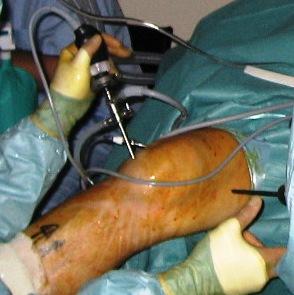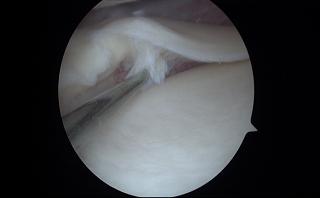Knee Arthroscopy Surgery
Knee arthroscopy surgery is one of the most common and frequently performed orthopedic procedures today. According to the National Center for Health Statistics, more than 600,000 procedures are performed in the United States each year. Since this procedure was first performed decades ago, it has literally revolutionized the way injuries and conditions are treated.
The procedure itself involves creating two to three small, ¼” stab wound incisions in the front of the knee called “portals”, through which a rigid fiber-optic lens is inserted into the knee joint through one of the portals.

The lens is connected to a small video camera and the images are typically transferred onto a television monitor for easy viewing.
The other portal slows for the introduction of a variety of equally small instruments designed to snip, grasp, cut and otherwise remove, tissue.
Sterile fluid is introduced into the knee, under mild pressure, through one of the portals in order to inflate, or "distend" the joint.
This allows for the safe introduction of the lens and hand tools so the smooth joint surfaces aren't accidentally scratched. In the vast majority of cases, most if not all the work can be accomplished through these portals.

Knee arthroscopy surgery is utilized to treat a wide variety of knee conditions and injuries, such as a meniscus tears , ligament injuries such as an anterior cruciate ligament tear and shaving of arthritic surfaces. It is predominately an out-patient surgery and typically takes less than an hour. It is usually performed under an anesthetic, either spinal block or general anesthesia.
Knee arthroscopy surgery can also treat osteoarthritis by utilizing various tips on the motorized shaving unit. It can remove rough jagged cartilage edges and debride the joint of loose bodies formed by cartilage flaking off the bone surface.
Leave Knee Arthroscopy Surgery; Return to Home Page
Leave Knee Arthroscopy Surgery; return to Knee Joint Pain

"We hope you enjoy your journey through Bone and Joint Pain.com"
